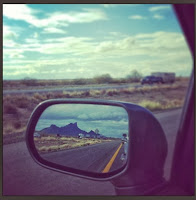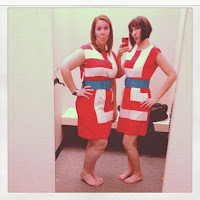Welcome to part 2 of our fact and opinion exploration!
You can read about part 1
HERE!
We picked up where we left off the day before with a seriously awesome animated video from 1989, called "Red Riding Hood and the Well-Fed Wolf" (Churchill Films), that I found via the lesson I shared yesterday (you can read more in part 1, but you can find it
here just in case). I really wanted my kids to practice identifying fact and opinions outside of text first so they could become comfortable with listening for signal words and paying close attention to items they know to be certain rather than pushing them into a book straight away.
This is where this blog post is going to come in handy...you see, the video the Beacon Lesson Plan calls for is not one you can just find on YouTube. Believe me I tried and tried again this year before I taught this lesson a 2nd time. I searched online high and low last year and thankfully found the clip needed (you won't even need the entire thing) on the animator's website.
HERE it is!
I've included some screenshots from Joel Fletcher's (the creator's) website for you to get an idea of how seriously neat and hilarious the video is.
If for some reason you don't have access to a computer and projector, you can actually find this at your local library. I did a search through my local library's system and actually found it via Overdrive. So, hopefully, you will find a way to show this in your classroom as my students find it quite entertaining...and even more important? It is challenging! The facts and opinions aren't so easy to pull out as one might think.
Before watching the video, my students got a T-chart ready in their reading notebooks. They are very much used to holding partner and group discussions with each other after we watch videos, so they knew the expectation right away. I stopped the video after every food group character made an appearance, which made it much easier for students to stop and jot down facts and opinions they had identified. After a couple minutes, I gave partner groups a chance to Rally Robin back and forth to share items they had recorded.
Once the video was finished, we came together to share different facts and opinions. I recorded them on our class anchor chart as students added them to their own charts. Before recording each one on the chart, we did a quick check by throwing up thumbs up if they agreed with the fact/opinion being shared or a thumbs down if they disagreed. We stopped to discuss why or why not. The more we did this the more comfortable they became and by the end of the discussion, we had an even better list put together than my students last year.
**And wouldn't you know it?! While I was posting this, I just noticed I placed a fact on the opinion side and my students didn't even notice! Gah!!! Maybe you can post this and ask your students to find what doesn't belong? LOL.**
In my defense, we were about to run off to P.E. that day, so I seriously must have just checked the clock and started writing in on the wrong side when I turned back around. Sigh. Oh well. I can totally revisit this with my kids tomorrow to see if they can identify the misnomer.
To practice it within text, the real part of our reading standard (our district is still using state standards at this time), I downloaded the extension file (you can get it
HERE) included in the Beacon Learning lesson in order to have my students read the restaurant review article.
Attachment is included with the Beacon Lesson Plan
Using two different colored highlighters, we did the first section together while I modeled the highlighting on the board. My kids then worked on the second part together. The two colors made it easy for me to walk around and check-in with students in order to see if I needed to intervene at all.



To step it up a notch, I showed my class a Discovery Education video downloaded from
Discovery Streaming all about tornados. At the end of it, I asked my students to take the opinion, "I think tornadoes are dangerous," and improve it using facts. They wrote up and discussed short paragraphs by naming at least 2 facts they learned from the video in order to support the opinion. My kids did well with this exercise, showing me that they are able to recognize how facts and opinions work together as well as how to decipher them. We extended the practice opportunity by having students pull an opinion from a text we had recently read (during Close Reading) and supporting them using facts quoted from the passage.
Screenshot from Discovery Education video
Screenshot from Discovery Education video
As the gifted cluster teacher, I try to give students a chance to make a product to show me their learning. Most times they are given a choice menu, but for this one I was looking for a quick and easy way to wrap up our unit. My awesome teammate put together a product rubric and description for making fact and opinion placemats and shared it with me. Here are some of the placemats students made which included facts, opinions, with supporting facts, and matching illustrations from one of our basal reader's Time for Kids articles called "Forests of the World."








.JPG)










.JPG)

.jpg)
.jpg)



.JPG)






















